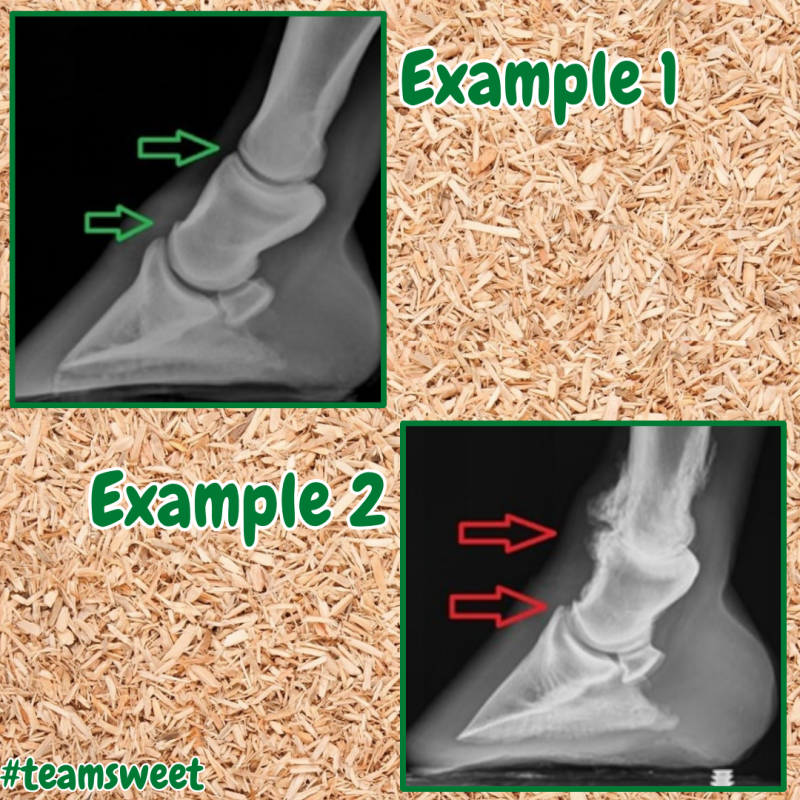Table of Contents
Arthritis/Ringbone – Part 1
We caught up with Clare from Team Sweet and we talked ‘lameness’ – So, 2 years ago this March Choc was diagnosed with ringbone after showing signs of lameness which was highlighted when circling to the left.
Back then, in the 13 years that I had owned Choc I can honestly say he had only been lame once and this was due to a foot abscess.
So, knowing his age was against us, I was really concerned that this new lameness was the start of things to come, and his retirement was looming – as you can imagine I was so worried for him and quite frankly us!
Ringbone is a lameness condition that affects the pastern and coffin joints in horses and is a degenerative disease that can continue to worsen over time. Ringbone can be caused through normal wear and tear of the joint but can also be brought on through trauma or overworking of the joint itself.

Example 1 – the lower green arrow shows the joints between the pedal bone and the small pastern bone (Coffin joint) and then the upper green arrow shows the short pastern bone to the long pastern bone (Pastern joint).
Example 2 – shows an example of arthritic changes to the pastern joint. Depending on which joint is affected it is known as either upper or lower ringbone.
Ringbone can also affect both joints at the same time.
Chocolate was diagnosed with arthritic changes to his inner near fore coffin joint and not long after his diagnosis came a hard swelling just above his coronet band.
As ringbone is a condition that cannot be cured I assured myself, Choc and my vet that I was going to do everything possible in regards to management alongside his medical treatment to try and slow down this disease – me and Chocolate were not ready for retirement just yet!
Choc’s vet and I came up with a treatment plan which initially involved anti-inflammatory’s painkillers and exercise, to help support Chocolate through the initial bony changes stage of the ringbone formation.
We treated his joint intravenously and he had daily medication to help with the inflammation and pain. His farrier also paid particular attention to ensure his feet were the best they can be.
Exercise was also a large part of supporting him as we did not want him to stiffen up during the period when these bony changes were forming, we needed to keep him moving – I continued to ride on a surface only in walk, in straight lines and only on the right rein.
Check out our next blog to find out how Choc got on and how easibed played such a large part in his recovery…
Check out www.easibedding.co.uk to find your local easibed stockist.
#easibed #easilover #TeamSweet #staysafe #sleepsoneasibed
Check out our easiblog here: https://easibedding.co.uk/news/
Follow us on Instagram: https://www.instagram.com/easibedding/

